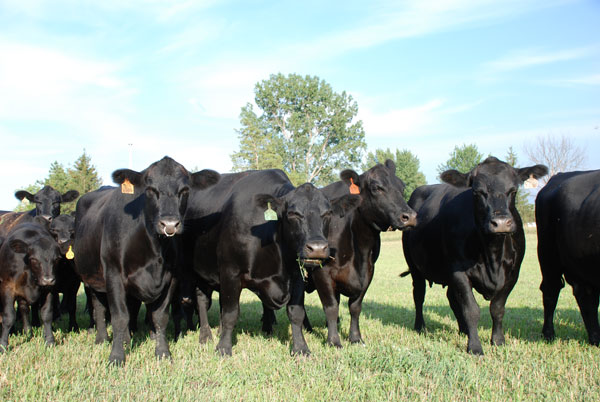As the European Union scurries to monitor and control an outbreak of Schmallenberg virus in its cattle and sheep populations, it also works feverishly to halt a wider ban on its meat products.
March 30, 2012

What appeared to be some unrelated symptoms like fever and diarrhea in dairy cattle in Germany and the Netherlands last fall is turning into an overblown tradenightmare for the European Union (EU) as countries begin slapping on trade restrictions over a little-known disease that seems to have spread well beyond its original infection zone.
Schmallenberg virus (SBV), named for the town in Germany where the strain was first discovered in November, appears distantly related to better-known diseases such as bluetongue and Akabane virus. The disease, which appears to be transmitted by biting midges and mosquitoes, has flu-like symptoms and passes through adults within days but leads to late-term abortions and congenital birth defects.
Thus far only found in cattle, sheep, goats and bison, without apparent risk of human transmission, SBV has been found on a growing number of farms since February as calving and lambing season peaks in Europe. From a single farm each in Germany and the Netherlands in November, to around 500 cases in Germany, the Netherlands, France, Belgium, and the UK by early February, it appears the virus infected adults last autumn. However, the extent of the infections is only now becoming apparent as calves and lambs are born with defects.
And, the virus’s reach continues to grow. Luxembourg and Italy were added to list by early March, and Spain announced its first infection (on a sheep farm) on March 13. That brings infections as of mid March to more than 1,700 cases. Earlier cases showed higher rates of abortions and defects in calves, but the rate has slowed with more cases now appearing in lambs.
The European Commission’s (EC) veterinary and consumer safety services are working to coordinate with EU member states and the World Organization for Animal Health (OIE) to collect and disseminate the growing body of research and analysis on the disease so that farmers and vets alike can control it. The expectation is that, if there is another round of the disease, it will again take place in the summer or fall. But this year, there is hope that blood-testing panels currently under development will help monitor the spread of the disease. Developing a vaccine could take two years, however.
The lack of information on control and eradication is causing serious concern among trade partners. Even though OIE says SBV can’t be transmitted through meat and milk, and the likelihood of transmission through genetic material is low, Uruguay banned imports of genetic material on March 21. The country imported 65,626 doses of cattle semen from France, Italy, Holland, UK, Denmark, Sweden, Germany and Spain in 2011.
Just before Uruguay’s ban, Egypt banned the import of live cattle. In early March, Russia banned the import of live cattle, sheep and genetic material, and extended the ban on March 20 to goats and pigs. The OIE and EU agree that pigs aren’t susceptible to SBV and fear the trade ban will cause serious economic damage to Eastern European and Baltic countries, none of which have discovered cases of the disease.
Live-animal trade between with Russia reached €188 million in 2011, EU’s largest live animal market, with €75 million of that trade now at risk due to the ban. Latvia exports about three-fourths of its pigs to Russia, which are now entirely banned despite not being susceptible to the disease.
Russia, which is expected to finally enter the World Trade Organization after August when the country’s parliament ratifies its entry, has received an official letter of complaint from the EC regarding the ban, especially its extension to pigs. The EU continues to argue that SBV-based trade restrictions are disproportionate and scientifically unjustified, equating the trade risk to that of Japan and Australia where the Akabane virus is present and risk-aversion measures are implemented.
But despite the launch of a coordinated counterattack against the disease and EU-wide coordination to monitor and control its spread, at least 15 more countries including the U.S. and Canada have expressed concern to the EC about the disease, with some expecting to announce trade bans soon.
The European Commissioner for Heath and Consumer Safety met with China’s vice minister of agriculture during a visit to Beijing in late March where he assured the Chinese – who are major meat importers from Europe – that the disease is being managed in order to avert another trade ban. China hasn’t yet indicated if it will implement a ban.
Though it’s unclear as to when the disease first entered the EU, veterinarians are working through back data to determine the first contact infection in order to better understand how, and how quickly, SBV was transmitted before the weather warms up, bringing mosquitoes and midges back with a vengeance – and with it, the risk of another season of calf abortions and birth defects next spring.
Meghan Sapp is a U.S. freelancer based in San Sebastian, Spain.
You May Also Like



